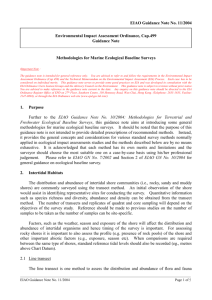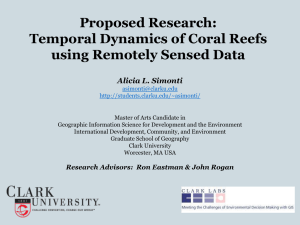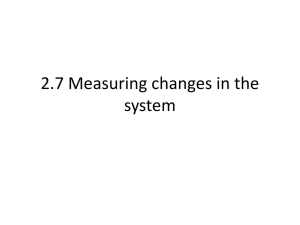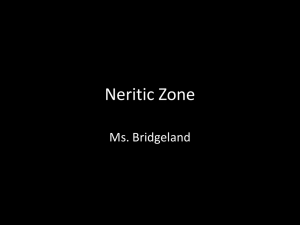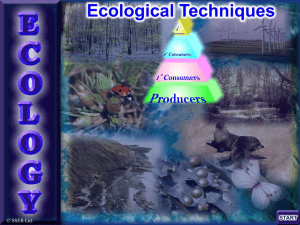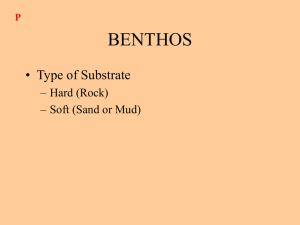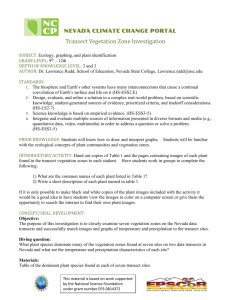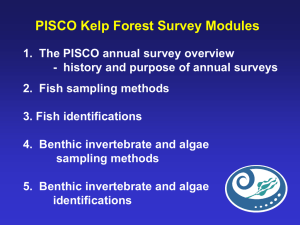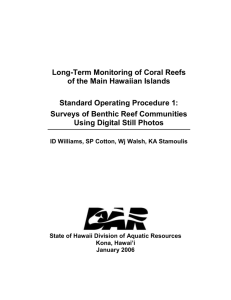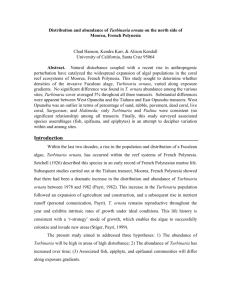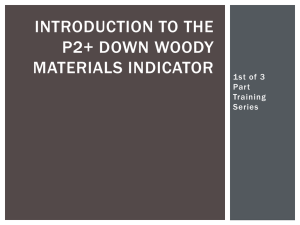Atlantic and Gulf Rapid Reef Assessment (AGRRA
advertisement
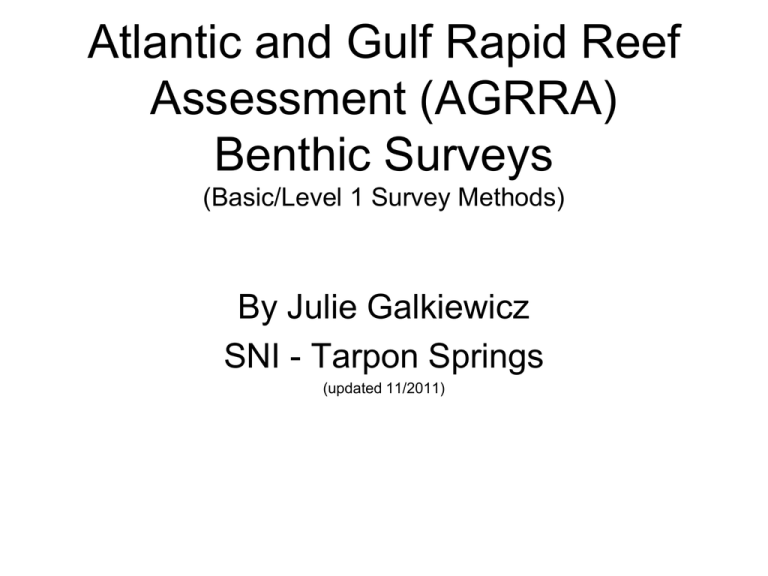
Atlantic and Gulf Rapid Reef Assessment (AGRRA) Benthic Surveys (Basic/Level 1 Survey Methods) By Julie Galkiewicz SNI - Tarpon Springs (updated 11/2011) Outline • Why should we use AGRRA? • How do we use AGRRA? – Two different parts – Types of measurements Why AGRRA? • Used by professionals (Dr. Beth and Dr. Chris!) • Used throughout the GoM and Atlantic • Lots of different types of data – Coral spp. and overall environment • Different levels of difficulty – We’ll use Basic, work up to Intermediate What is AGRRA? • Used to rapidly assess the reef environment – Looks at coral cover, diseases, bottom types, presence of harmful/helpful species – Experienced researchers can complete two full AGRRA surveys in an hour • Two different parts – Point count and coral recruits – Belt transect Step 1 - Above the Water! • Record on the data sheets – Your name – Date – Site name, Number (first or second site visited?) – Long & Lat (ask the Captain!) – Reef type - Patch/Sponge Step 2 - Below the Water! • Lay the transect line – Don’t overlap with another group – Want it to lie along the reef • Write down depth at 0, 10 m • Water temp • Time you start Point Count Step 3: Point Count • Transect is 10 meters long, marked every 1 meter • Meter stick is marked every 10 cm • Write down the bottom type under each 10 cm mark – Sand, Rubble, Pavement – Live Coral, Dead Coral – Macroalgae, Turf Algae, Sponges, Gorgonians Point Count 10 m Point Count 3m 0m Sand Macroalgae 2m Rubble Sponge Point Count Different Bottom types - 1 1c 1b 1a Point Count Different Bottom types - 2 2b 2a 2c Point Count Different Bottom types - 3 3a 3b Point Count Step 4: Quadrats! • Every other meter – 5 quadrat measurements per transect line • Place quadrat next to line – Record every baby coral (coral recruit) smaller than 2 cm – Main substrate type in the quadrat • Live coral, Dead coral, Pavement, Rubble, Sand, Other Point Count 10 m Quadrats 9 7 5 3 0m 1 Sand Macroalgae Sponge Coral Belt Transect Belt Transects • Point Counts give us a general overview of different bottom types • Belt Transects focus in on corals – Size, diseases, bleaching Belt Transect What is a “Belt Transect”? • Uses a “belt” or wider area around the transect line • 50 cm on each side, 1 m total width • Measures more of the small corals From AGRRA v5 Protocol Belt Transect Measuring Corals • Along the Springs Coast, most of our corals are small • Measurements estimate total volume – Length, width, height ? ? Belt Transect 1. Find the direction the coral is growing • Up? Diagonally? 2. Look directly down at the coral from the direction it’s growing in Belt Transect 3. Find the longest diameter looking down from above. 4. Perpendicular to that line, find the widest part. Belt Transect 5. Using the direction of growth, measure the height of the coral Belt Transect Special Measurements • But what if the coral has tipped over? What do you measure? Height Width Summary • Most important! – RECORD DATA CORRECTLY! • Ask for help if you need it • This is YOUR data, find ways to use it

